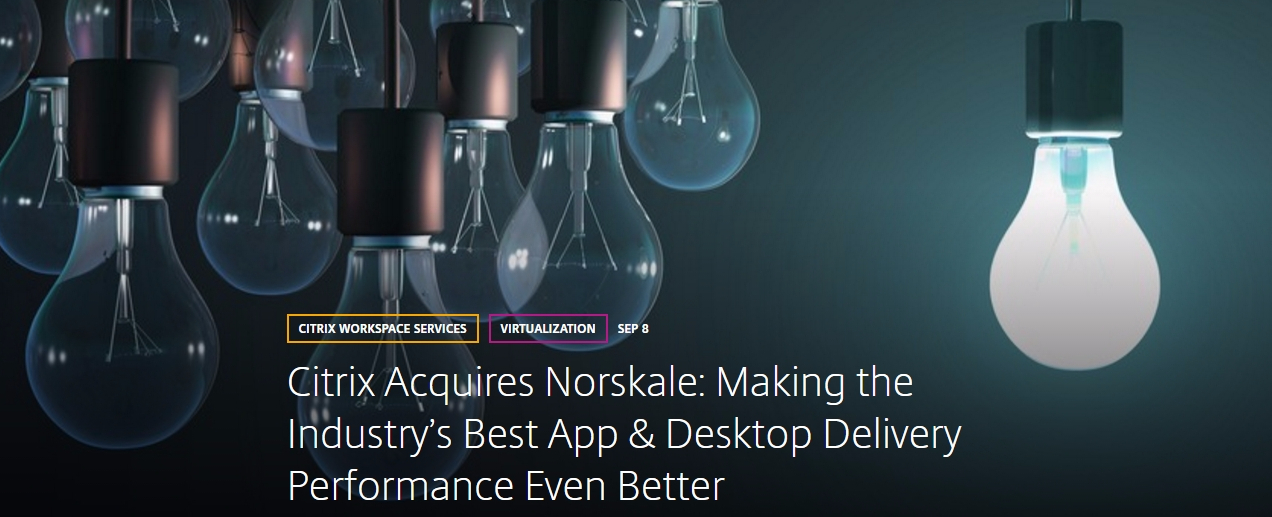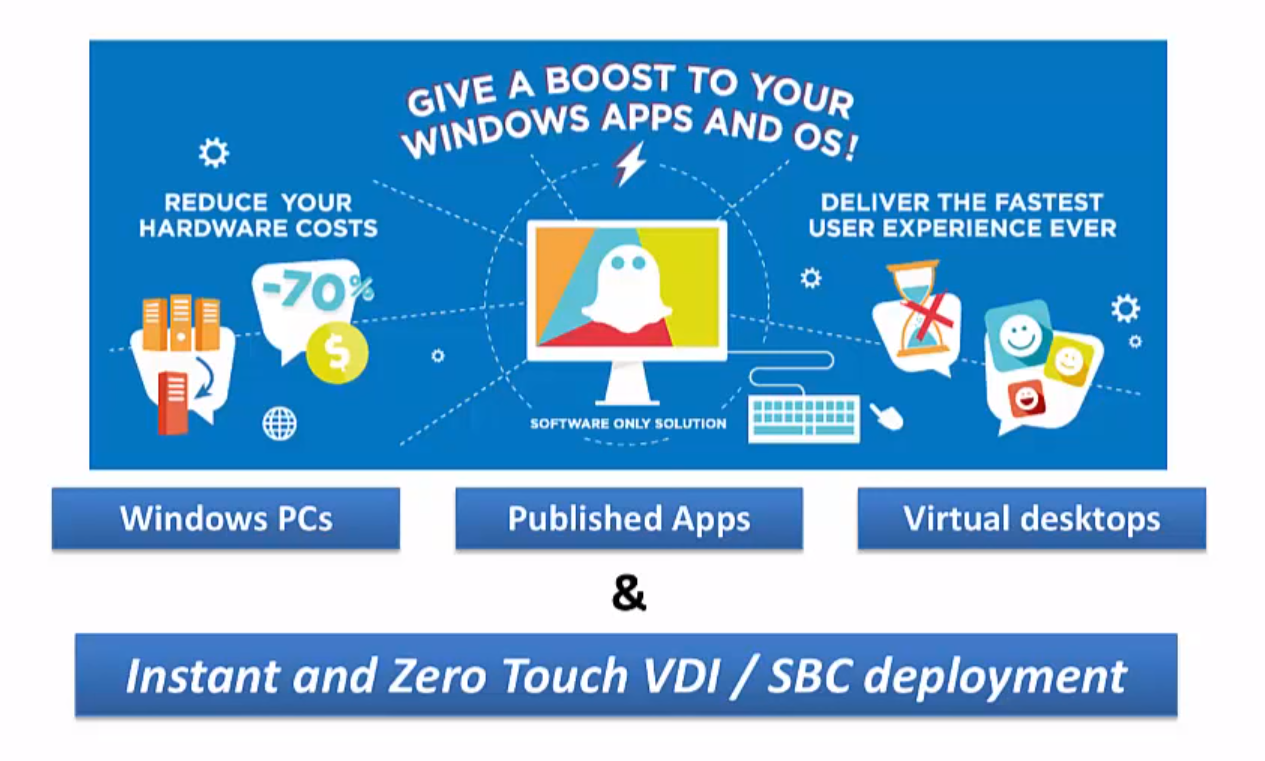Citrix’s announcement in September that it acquired French startup Norskale didn’t make waves in the media, but the ramifications of the deal may be immense. Norskale focuses on optimizing and simplifying workspace performance and accelerating application delivery, components often referred to as “user environment management” (UEM). The acquisition may be especially significant for Citrix’s flagship XenDesktop/XenApp, which will not only affect Citrix’s customers but other vendors in the UEM space.
Behind the deal

Let’s start with answering one simple question: Why did Citrix acquire Norskale? As long as there are server-based computing (SBC) environments being built, management of the user environment is important. In the early days this was mainly based on preserving the state of the SBC servers and regulating the access to the applications to specific employees who had permissions to use them. Over the years, this has grown to produce a fully pre-configured user environment, which can be adjusted by the users to their needs, including retaining the settings the user configured within the operating system and applications. This started on the shared desktops (XenApp, RDS Sessions hosts, and so on), but nowadays it also applies to traditional desktops, laptops and VDIs.
In the past, specific products built by specific vendors divided into two versions: profile management (retaining user settings) and user environment configuration (the full configuration of a user’s desktop environment). Products focusing purely on profile management have been acquired by other companies or just disappeared. A good example is Sepago, which was acquired by Citrix a long time ago and today is known as Citrix User Profile Management (UPM). Examples of well-known UEM products are RES One Workspace, AppSense DesktopNow, Liquidware Labs Profile Unity, and Norskale VUEM.
Citrix included profile management in its products, but it never stepped into the full UEM space, leaving room for other vendors to snatch business.
 Why did Citrix decide it wanted to include full UEM capabilities in its products now? There are two main reasons, in my opinion. The first is that more and more customers are asking for such functionality in Citrix’s products. Second — and this is probably the most important — it is a response to actions taken by Citrix’s competitors. In February 2015, VMware bought Immidio, a Dutch-based company that started with profile management products and evolved to making user environment management products. With this acquisition, VMware could offer UEM within their Horizon View and AppVolumes products and offer added value with UEM that Citrix could not offer. VMware did a tremendous job integrating Immidio products into their product suite.
Why did Citrix decide it wanted to include full UEM capabilities in its products now? There are two main reasons, in my opinion. The first is that more and more customers are asking for such functionality in Citrix’s products. Second — and this is probably the most important — it is a response to actions taken by Citrix’s competitors. In February 2015, VMware bought Immidio, a Dutch-based company that started with profile management products and evolved to making user environment management products. With this acquisition, VMware could offer UEM within their Horizon View and AppVolumes products and offer added value with UEM that Citrix could not offer. VMware did a tremendous job integrating Immidio products into their product suite.
Citrix knew it had to follow VMware and find a way to offer similar functionality. It was a kind of déjà vu. The same thing happened when VMware bought CloudVolumes and Citrix needed to offer similar functionality, which resulted in the introduction of AppDisk.
Citrix had two options: develop the software in-house or look for a product on the market and acquire the company. Building UEM from the ground up is a time-consuming task, so it’s logical that Citrix decided to get the technology via an acquisition.
But why did they acquire Norskale? I think Citrix looked for a product that offered the functionality they wanted and one that could be integrated into Citrix’s own products without too many issues.

Norskale is young company, so its code base is probably not enormous. And Norskale founder, Pierre Marmignon is well-known for his utilities that are used in a Citrix environment. He also has past connections with Citrix. Other possible candidates had already been bought (Immidio, AppSense), offer a large product suite (Liquidware Labs, Tricerat, RES Software) or the code base is not easy to include into the Citrix products (RES Software, AppSense).
After weighing all the factors, Citrix concluded Norskale was the best takeover candidate. Although some products from other companies offer more functionality, Norskale’s product offers enough features for most organizations. Also, Citrix leaves room for other vendors in this space to offer more functionality for specific scenarios. I have tested the product a couple of times and it works fine. And there is no overlap with Citrix’s existing products.
What’s next
This brings us to the future. Most other vendors have some functionality that is not available within Norskale’s products. However, for many organizations the Norskale functionality is good enough. I expect that current customers of the other UEM products will not switch over quickly. First of all, they already made the investment and it will be a tough job to reconfigure their environment. But some companies can save a large amount of money by switching, so there will definitely be organizations that will try to move over to the full Citrix stack. Having all components from one vendor makes it easier for support as you only have to contact one company. Companies that currently don’t have a UEM product running on their (future) Citrix environment will probably try Citrix’s UEM first and, as mentioned, most of them will be satisfied by the offered functionality. From that point, the other UEM vendors will definitely have to fight hard to get new customers.
From a Citrix standpoint, we know that the Norskale products will be renamed Workspace Environment Manager (an almost identical situation to when Immidio was renamed Workspace Environment Management). The functionality will be available for customers using the XenApp Enterprise, XenApp Platinum, XenDesktop Enterprise, or XenDesktop Platinum with an active software maintenance. It’s still not clear how the Norskale product will be integrated into the Citrix products. In the just released XenApp/XenDesktop 7.11, there is no trace of the acquisition, but it’s still very early.
The right choice
The Norskale acquisition has been well received in the Citrix community. Out of the available products, this was the smartest choice. Although it is not clear how the product will be embedded, I expect that it can be integrated well and will definitely offer added-value for many Citrix customers. As for what the impact will be on the other UEM vendors, that remains to be seen.
Photo credits: Jannemans, Norskale, Citrix




We are now in sept 2018.
WEM still is not integraded into citrix management consoles.
The product works – (sometimes). Do you still think Citrix made the righ decision?
I think it is still an added value to the portfolio. Maybe the vision is a bit different that expected or more difficult to integrate then expected. With the Cloud service offering, the additional infrastructure requirements are gone. Maybe this will cause that the on-premises functionality will be a separate product.
Regards,
Wilco